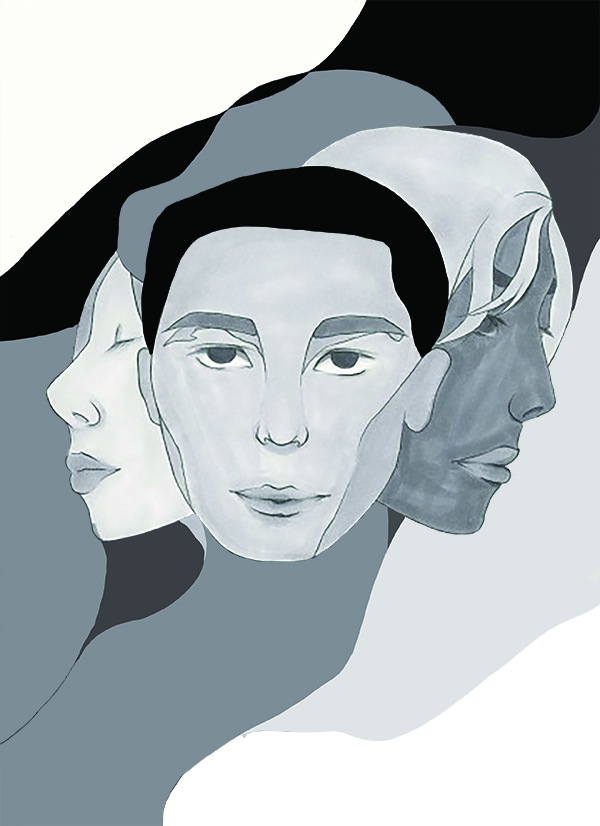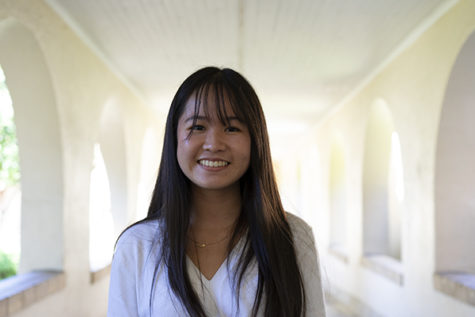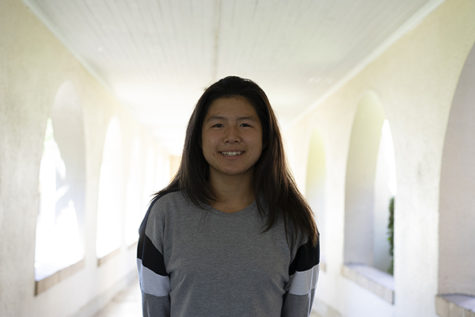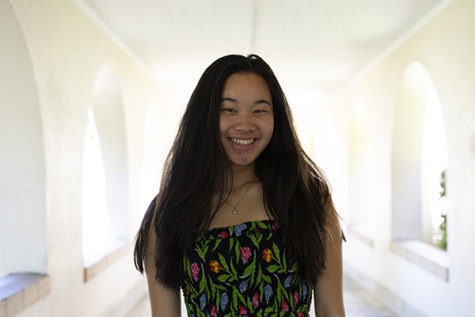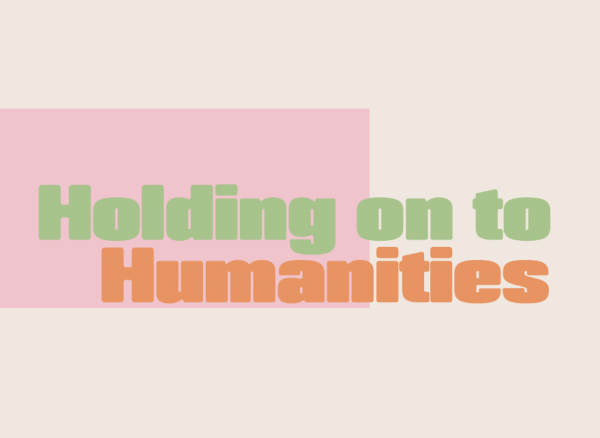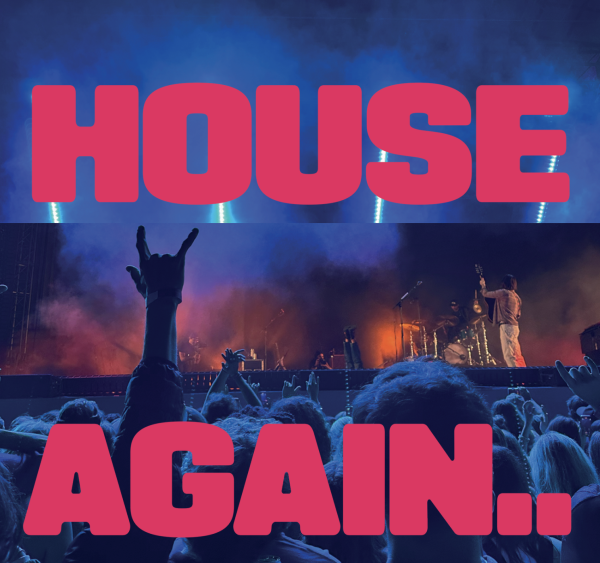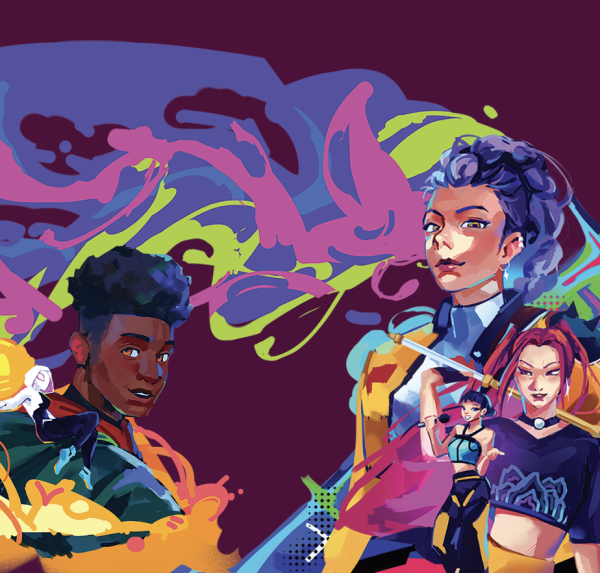Only Human
Confining, ignorant and harmful, the “model minority” myth continues to affect an entire demographic of diverse individuals.
As he wove through crowds of people walking up and down the sloped street, Paly senior Jonathan Kao wiped a bead of sweat off his forehead. It was noon on a hot July day, and while the humidity contributed to his discomfort, Kao felt uneasy for a different reason. Thinking about interactions he had with well-known business professors and faculty members for the past week, Kao became more and more agitated with every step he took. When Kao approached the building, he sighed and reluctantly entered the lecture hall.
After the lecture, Kao approached the professor and began to ask questions, eager to gain more insight. He hoped that his interaction with the professor would be different from their last conversation. But as the professor spoke, he quickly faced the same problem as before.
And he was let down once again.
“Whenever I asked questions or engaged in conversations with my professor, he never seemed interested in what I had to say; he was always too distracted,” Kao said. “Every time I hoped that it would change but this time and every other time was no different.”
From his experiences talking to his professor and other business faculty members, Kao was under the impression that no one thought he, being Asian, fit into the world of business. “When interacting with the business professors, I always felt like I was being talked down to and didn’t belong,” Kao said.
Kao’s experience with STEM professors and faculty members, however, was drastically different. Engineering professors and faculty members created a welcoming classroom environment, and Kao felt more comfortable and accepted in this setting. “During engineering lectures, my professors assumed that I knew what I was doing and was well-versed with a lot of knowledge,” Kao said.
Throughout the three weeks at the summer program, Kao consistently noticed instances where he was treated differently between business and engineering lectures. Although he was participating in a prestigious summer program organized by one of the top universities in the country, he still sensed a feeling of alienation as a result of his race and the “Asian stereotype.”
Preconceptions, such as being educated, intelligent and hard-working, are often associated with the Asian population and coincide with the current Asian stereotype. However, less than a century ago, Asians were seen as illiterate and unassimilable. Many found it difficult to become U.S. citizens and were victims of harsh racism and unlawful segregation. With changes in U.S. immigration laws came waves of Asian immigrants, many of whom had already graduated college.
These immigrants were more likely to have a college degree than the average American, and this hyper-selectivity resulted in the current stereotype of intelligence and competence; it also brought upon the stereotype that Asians are too knowledgeable, too focused on work and lack personal skills — thus came about the label of “model minority.” This two-sided stereotype of Asians has sparked the debate; in today’s world, some may regard these labels as beneficial, while others view them as confining and degrading.
Discrimination is rampant in the United States, but the “model minority” generalization is one that drives a wedge between Asian Americans and other racial minorities by imposing this notion that all Asians are a prototype for success. Unfortunately, this marginalizes the experiences of an entire race of people with countless different ethnicities and cultures. By creating a mold that one can never truly fit into, the “model minority” myth is a constant reminder to the average Asian American that their race will be judged above all else.
“When I think of someone who fits the ‘Asian stereotype,’ I think of someone who is extremely hard-working, smart, keeps to themselves and excels in the STEM area,” Kao said. Kao feels like this stereotype may cause others to have the wrong impression of him before getting to know him, especially combined with his aspirations in business.
“One of the major ‘Asian stereotypes’ is incompetency in the humanities, and throughout camp, I kept noticing instances where this fact came up,” Kao said. “It wouldn’t be fair to attribute this difference solely to the color of my skin and my appearance, but I was under the impression that it certainly played a large factor.”
Of course, everyone already knows the danger of a single story. It can confine a perception of someone who is otherwise unique, interesting and has a distinct perspective.
“In everyday life, even before I speak to new people, I sometimes feel that they have already made judgments on my personality and interests,” Kao said. Despite this, society is making large strides to erase these preconceptions through better media representation and a more welcoming mindset to cultural diversity.
Over the years, the push for increasingly accurate and appropriate representation of Asians in mainstream media has helped to dispel stereotypes regarding Asian American identities. A larger variety of role opportunities for Asian actors and actresses that deviate from stereotypical roles are breaking down the predominant limiting narrative promoted by the media.
“When I was in high school, I don’t remember any mainly Asian films. The only one I recall watching was ‘Better Luck Tomorrow,’ a movie where one student murders another,” Paly math teacher Daniel Nguyen said. “It’s exciting to see movies such as ‘Crazy Rich Asians’ and ‘Always Be My Maybe’ explode in popularity. It also makes me happy to see Asian-Americans get elected to public office.”
As the media embraces the variety of Asian American experiences and more Asians take on leadership positions, the portrayal of Asian narratives is expanded and in turn, represents more diverse perspectives. This representation is essential to transforming the general perception of Asian Americans and allowing public policy to reflect the perspectives of actual people.
“The idea of a ‘model minority’ is damaging,” Nguyen said. “It bundles together billions of people from incredibly diverse backgrounds and slaps a label on them. Even people from the same country can have their own distinct culture, tradition, and values.” The “model minority” concept projects the perception that all Asians are successful, educated, and have a high standard of living. This generalization overlooks the vast variety of life experiences of Asian Americans as well as the disparities that exist within the Asian community. On average, Japanese Americans have a much lower poverty rate than Bhutanese Americans, but lumping these different communities into one basic stereotype perpetuates the idea that all Asians are at the same socioeconomic status. This potentially affects policy decisions that successfully bar help from those who may need it.
Though society still harbors prejudice against Asian Americans, Brent Yamashita, a patent attorney at a law firm and a Paly parent, believes that society has greatly progressed in casting aside stereotypes. “Overall, I think today is a much better time to be an Asian American than any time in the past,” Yamashita said. “People like Constance Wu, Andrew Yang, Nikki Haley and Paly’s own Jeremy Lin are doing wonderful things for us by showing the world a side of Asian Americans that some never knew was there.”
Rather than dwelling on the small injuries of being prejudged according to an overarching stereotype, Yamashita takes his Asian American identity in stride.
“I am good at math and science. I am quiet and easy-going. I often don’t show a lot of emotion, and I am not a good driver!” Yamashita said. Although there are ways that he fits into the stereotype, there are countless instances where he breaks it.
“In my job, I am good at speaking in court and in depositions, and people sometimes have told me afterwards that they did not know I had that in me,” Yamashita said. “Once I get going, I can have a really biting sense of humor. I am also good at voice impressions, and that can throw people for a loop.”
Yamashita, like many other Asian Americans, has encountered instances where ignorance led others to assume aspects of his identity based on stereotypes, but he considers each of these instances an opportunity to change the narrative.
“I have heard comments about how well I speak English at least five times during my lifetime. It always hurts a little to hear that sort of thing, but these days, the way I would respond to that is I would say, ‘Thank you. I was born in America, so no big deal,’” Yamashita said. “We have to force ourselves to use these events as opportunities to change the other person’s impressions of who we are. Maybe the next time that person sees an Asian American, they will wonder whether that person can speak English as well as that other guy they met.”
The bitter truth is that stereotyping is human nature and, therefore, the idea of a “model minority” will never truly disappear; however, there is a lot that Asian Americans can do to show that they are, in fact, a community of individuals that cannot be summarized through simple generalizations.
“Rather than deny that we form stereotypes, we need to acknowledge that we do, and we need to be aware of it when we see or meet someone for the first time and try to self-correct,” Yamashita said.
Though we can accept that stereotypes can never be broken, they can be overcome. Rather than being angry or complacent with the “Asian stereotype,” Asian Americans can live life beyond these generalizations and continue working hard and growing past the idea of the “model minority.”
As Yamashita put, “You know that equation from physics, v(t) = v0 + at? The velocity at time t is based on the starting velocity, v0, and acceleration over time. For each of us, we have a starting velocity. That might be affected by things like the socioeconomic status that we were born into, our physical traits and also things like society’s stereotypes about our race and gender. Those are largely beyond our control. But we have a choice — we can be angry and withdraw or lament, or we can accept it for what it is and push through it, meaning that we can affect the acceleration, a, in the physics equation to overcome any bad starting velocity.”
Art by: Ellen Chung


